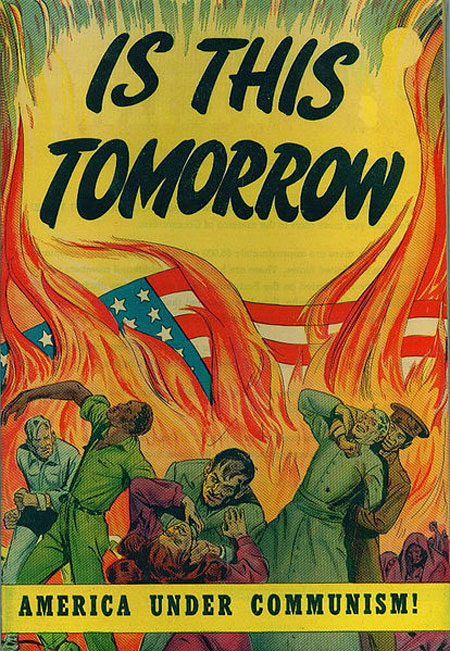The Russian presence in Crimea seems to recall the Soviet Union’s post-World War II expansionism and the resulting era of global bipolarity, when the world seemingly fell under two divisive ideological banners. Although the communist regime has since collapsed and Russia no longer holds its status as the U.S.’s rival superpower, the current international situation strikingly parallels the historical atmosphere during the Cold War.

Cold War propaganda
A brief history crash course:
The Cold War world was largely divided into two sides: the United States and its allies on one side and the Soviet Union and its allies on the other. This division was responsible for shaping the domestic politics of many developing nations, as well as the direction of global progress.
China was a key player in this schism. As a communist power, its allegiance was given to the Soviet Union, its neighbor to the North. However, as the relationship between Mao and Stalin disintegrated, so did the alliance between the People’s Republic of China and the Soviet Union. This eventually resulted in the Sino-Soviet split in 1961.
For the U.S., this situation was ripe with strategic opportunity; thus, the U.S. began courting China’s favor, which would make a big difference in the international balance of power. As regional relationships developed, this balance transformed into one of tripolarity, as one could no longer count on China (and its UN Security Council seat) to side with the USSR.
How is this related to what’s going on in Ukraine?

When talking geopolitics, it always helps me to see a map. Where is Crimea? It’s south of Ukraine, that drop of land in the Black Sea.

In a busy “big picture” perspective
Once again, Russia and the U.S. are at odds, with international attention focused on how China will respond to this controversy. Some have argued that Vladimir Putin’s annexation of Crimea is a move to return Russia back to its Cold War glory. It also appears that the PRC is once again stuck in the middle.
In recent years, the relationship between China and Russia had been strengthening since their Cold War antagonisms. The two neighbors have often taken the same side on a range of diplomatic issues. Chinese President Xi Jinping had made a state visit to Moscow in 2013, while Russian President Vladimir Putin had put forth the idea of a special relationship between the two powers. Furthermore, trade relations have been booming. It seems that China would support Putin’s actions.
Yet, the Russian Federation’s invasion goes against the international codes of national sovereign and territorial integrity, an issue on which China has always held a strong stance. Supporting this expansionist action would go against China’s record of advocating national sovereignty. Not only that, but supporting Crimean separatism could fuel China’s own separatist movements.

Who is leading? It’s all perspective
Based on these factors, China’s decision on this issue could be highly indicative of the direction of its own political development. When China abstained from the UN Security Council vote on a Crimea resolution, it reflected the difficulty of their positioning. Some have taken this abstention as a marker of China’s condemnation of the Russian intervention in Ukraine. Some have interpreted this as a show of support. Others claim that this action should be taken for its face value: that China wants to refrain from taking any side.
It seems that now, much like it was during the Cold War, the question of which side China is on is extremely relevant to the future of international politics. More than that, China’s concerns are also highly self-reflective.
It’s no secret that territorial disputes and separatism are issues that have plagued the Chinese government for a long time. Particularly in regard to Taiwan and Tibet, China could undoubtedly see its own territorial issues reflected in the current international controversy surrounding the Crimean separation from Ukraine.
What happens next could indicate to China how similar actions on its part toward its own troubled territories would play out. In this case, perhaps it is best for China to refrain from any clear position on this issue. Knowing that Russia would inevitably veto the UN resolution on Crimea, perhaps it was wise for China to abstain.
Ultimately, how the Crimean crisis plays out could possibly give us a snapshot of Chinese policies going forward, and the future of the global balance of power.